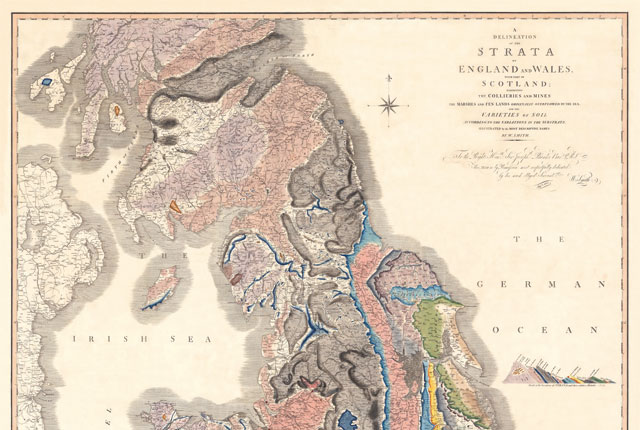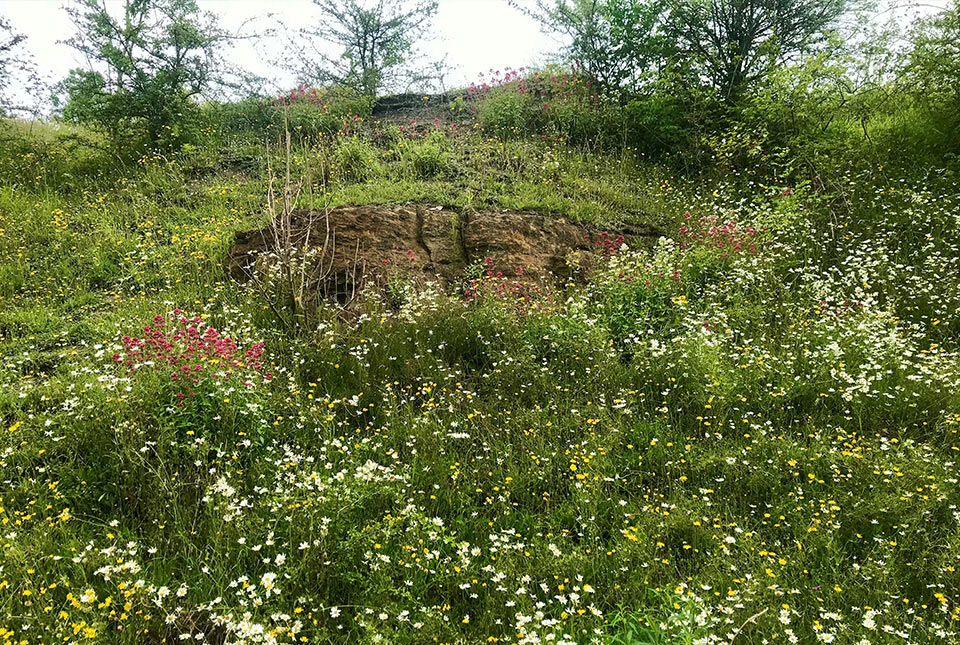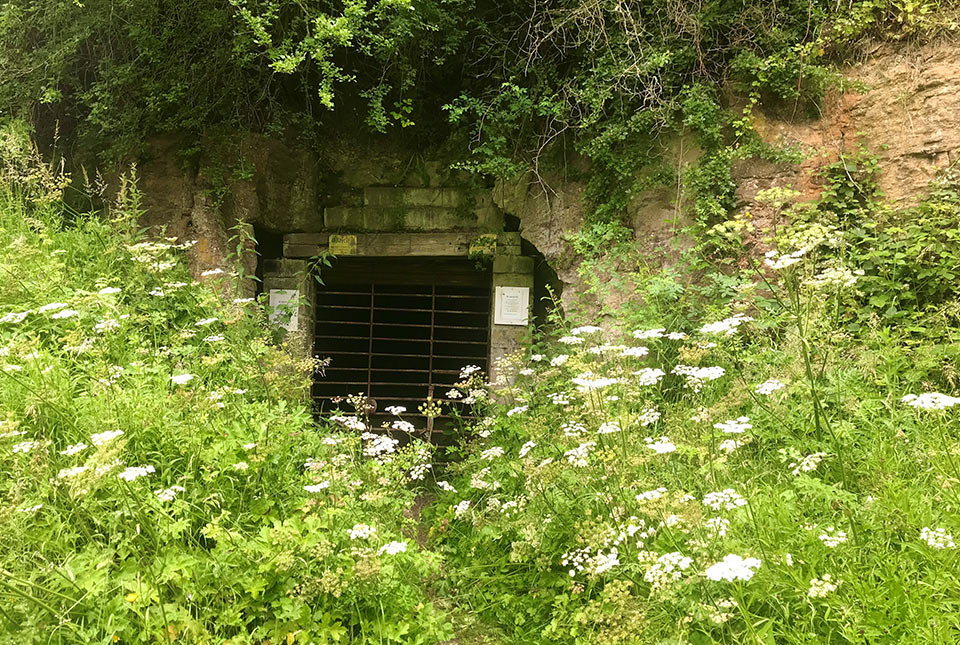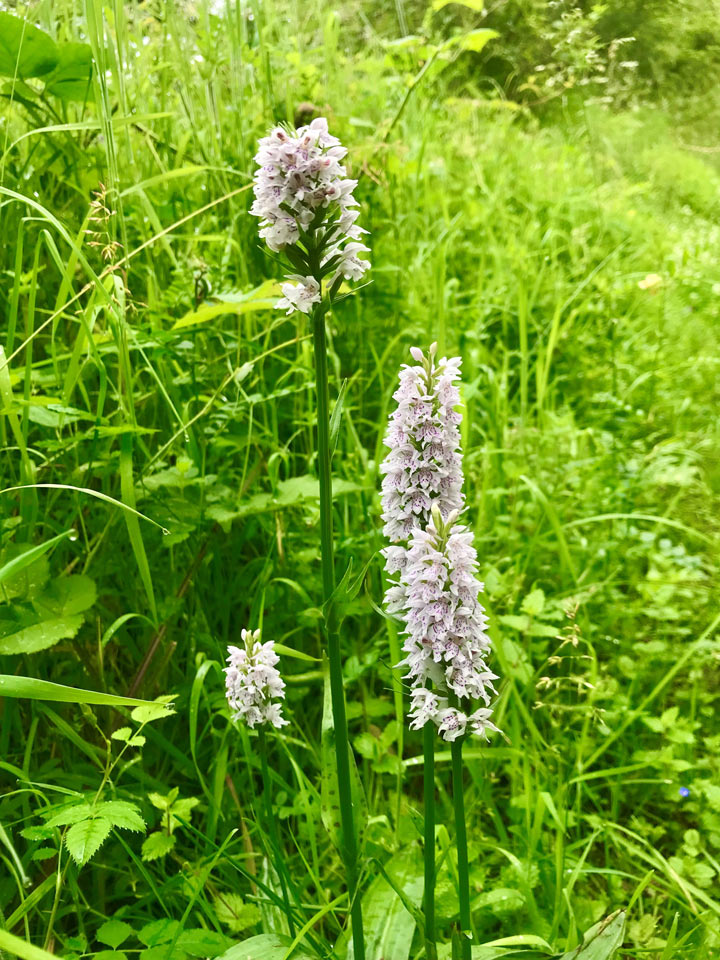Holwell Nature Reserve is an area of disused mines and quarries a few miles from Melton Mowbray, Leicestershire. There is still evidence of former workings, including Brown’s Hill Quarry.
Stratigraphy
Most of the rocks exposed are to the left of the main gate and are composed of sedimentary rocks from the Jurassic (Lias Group, around 190 million years old).
- The Dyrham Formation is a fine-grained, fossiliferous sandstone that can be seen at the bottom of the main quarry.
- Overlying this is the Marlstone Rock Formation, an ooidal ironstone (ooids are small, spherical grains formed by thin concentric layers of iron minerals in this location).
- On top is the softer Whitby Mudstone Formation, a soft, fossiliferous, fissile mudstone. Exceptionally well preserved fossils of bivalves and ammonites have been extracted from this formation.
- The youngest rocks are the limestone-rich boulder clays of the Oadby Member, which were deposited after erosion of the underlying rocks. These clays were deposited around 500 000 years ago, when glaciers passed over this region.
Palaeoenvironment
These lower two formations suggest that a warm, shallow sea covered this region in the Jurassic. The fossils found in the sandstones and marlstone are generally broken up, probably during transportation by strong tides or currents. The currents caused the cross-bedding seen in the exposed quarry faces. The overlying Whitby Mudstone Formation suggest a deeper water environment.
Biodiversity
In addition to the geology, the nature reserve contains a wealth of biodiversity. The former quarry has left a range of habitats, including bare rock faces, slopes and spoil heaps, which have now been colonised by herb-rich grassland through to dense woodlands. Hollows in the spoil are sheltered and sunny spots, perfect for butterflies, bees and moths. In the summer months, butterflies are very common and include common blue, dingy skipper, green hairstreak and Essex skipper.
From June to August, common spotted orchids are abundant, especially along the Mineral Line (information leaflet available at the reserve entrance). On the top of the quarry, a few bee orchids grow. The shallow, lime-rich soils provide ideal conditions for many species of wildflower including St Johns-wort, meadow vetchling, viper’s-bugloss and hare’s-foot clover. The richer ground contains ragged-robin, marsh thistle and common toadflax.
The reserve has a network of paths crossing through woodland where common birds include tits, finches, woodpeckers and sparrows, and, more rarely, marsh tit, willow warblers, blackcaps, lesser whitethroats and spotted flycatchers. Green woodpeckers make the most of the grasslands and buzzards, kestrels and red kites are often seen soaring overhead.
Visiting the reserve
Holwell Nature Reserve is a 16.4 hectare reserve north of Melton Mowbray in Leicestershire. It is owned and managed by the Leicestershire and Rutland Wildlife Trust and is composed of Brown’s Hill Quarry, Holwell Mineral Line and North Quarry. The address is Main Sreet, Holwell, Melton Mowbray LE14 4SZ.
- Please note that there are steps and steep parts of the reserve.
- Please park on the hardstanding opposite the entrance to Brown’s Hill Quarry. Space is limited.
- Do not park (or partially park) on the surrounding grassland as this is privately owned grazing land.
- Please do not hammer the rocks or collect fossils from this site.
Further information
More information is available from the Holwell Reserves, Leicestershire and Rutland Wildlife Trust. Information on the geology of Bown’s Quarry is available on the information board at the site, provided by BGS.
About the author

Prof Melanie Leng
BGS Chief Scientist, environmental change, adaptation and resilience
Relative topics
Reference
Carney, J N, Ambrose, K, Brandon, A, Lewis, M A, Royles, C P, and Sheppard, T H. 2004 Geology of country around Melton Mowbray. Sheet Description of the British Geological Survey, 1:50 000 Series Sheet 142 (England & Wales). (Nottingham, UK: British Geological Survey.)
You may also be interested in

Discovering Geology
Discovering Geology introduces a range of geoscience topics to school-age students and learners of all ages.

Maps and resources
Download and print free educational resources.

Postcard geology
Find out more about sites of geological interest around the UK, as described by BGS staff.






